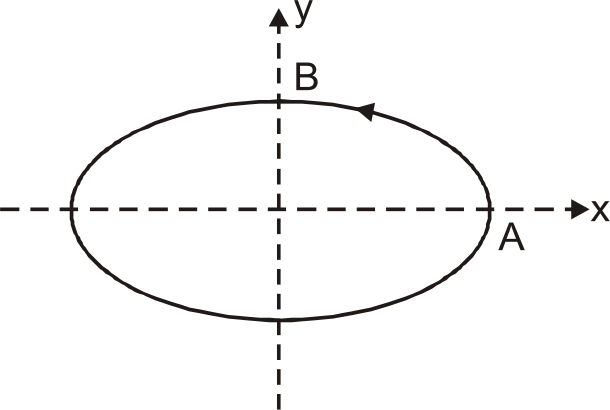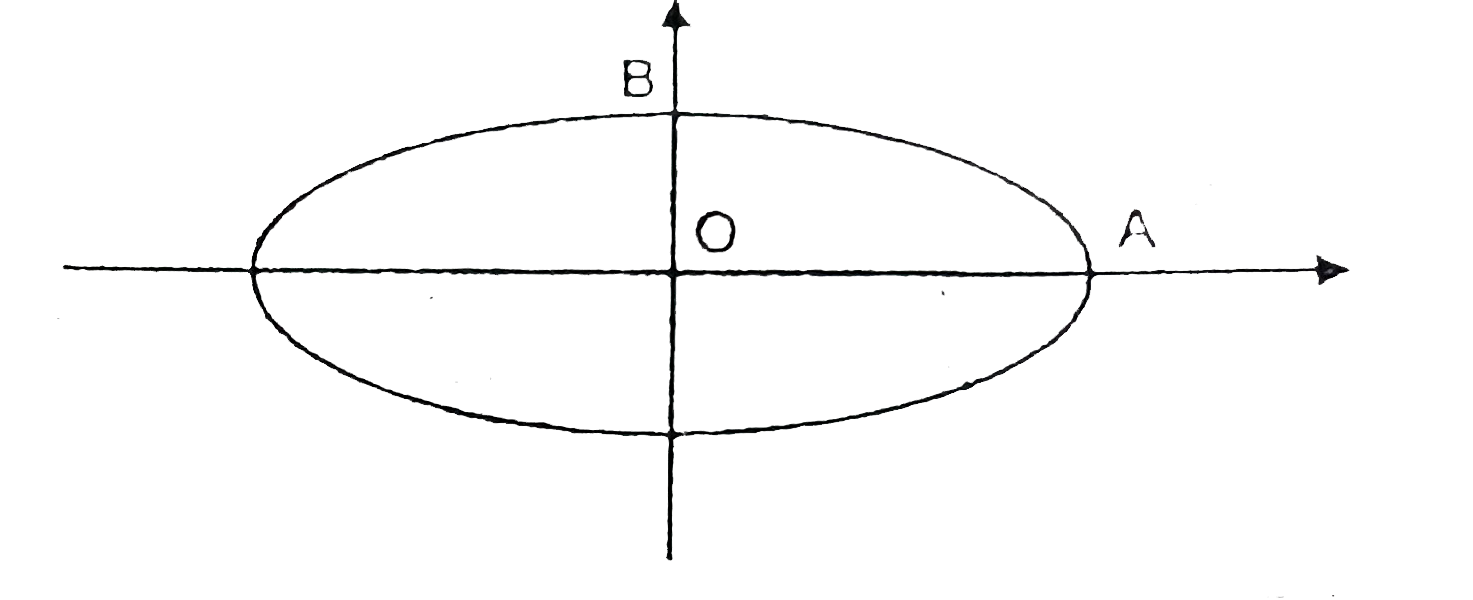A particle is moving along an elliptical path with constant speed. As it moves from A to B, magnitude of its acceleration :

Continuously increases
continuously decreases
Remains constant
first increases and then decreases
at=dvdt=0
ac=v2R
From A to B radius of curvature increases
So, acceleration decreases

Topper's Solved these Questions
Similar Questions
A particle is moving along a circular path with a constant speed 10ms−1.What is the magnitude of the change in velocity of the particle ,when it moves through an angle of 60∘ around the center of the circle ?
View SolutionA body is moving in a circular path with a constant speed. It has .
View Solution
Knowledge Check
- Question 1 - Select One
A particle is moving on a circular path with a constant speed v. Its change of velocity as it moves from A to B is:
 A2vsin(2θ)BzeroC2vsin(θ2)D2vcos(θ2)
A2vsin(2θ)BzeroC2vsin(θ2)D2vcos(θ2)
A body is moving in a circular path with a constant speed. It has .
View SolutionA particle is moving on a circular path with constant speed, then its acceleration will be constant in
View Solution
A particle is moving on elliptical path with constant speed v. The semi major axis ad semi minor axis are a and b respectively. Select incorrect statements.View SolutionIf a particle is moving on a circular path with constant speed, then the angle between the direction of acceleration and its position vector w.r.t. centre of circle will be
View SolutionA particle is moving on a circular path with constant speed v. The magnitude of the change in its velocity after it has described an angle of 90∘ is :
View SolutionA particle is moving on a circular path with constant speed v. it moves between two points A and B, which subtends and angle 60∘ at the centre of circle, The magnitude of change in tis velocity and change and magnitude of its speed during motion from A to B are respectively
View SolutionA particle moves in a circular path with a uniform speed. Its motion is
View Solution

